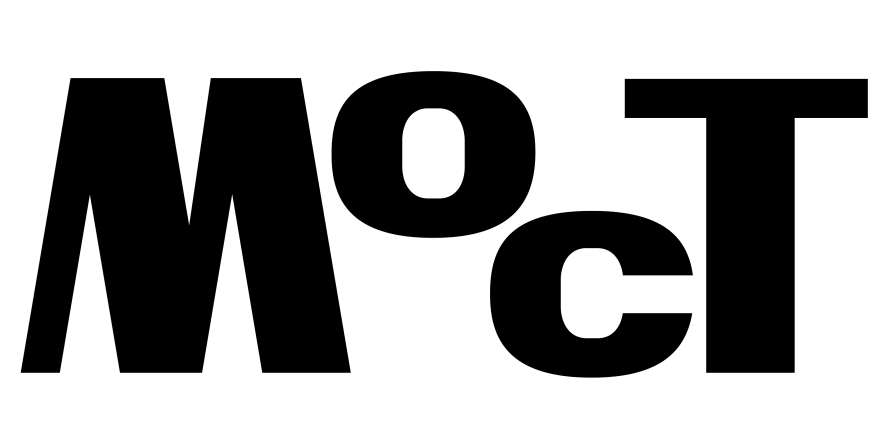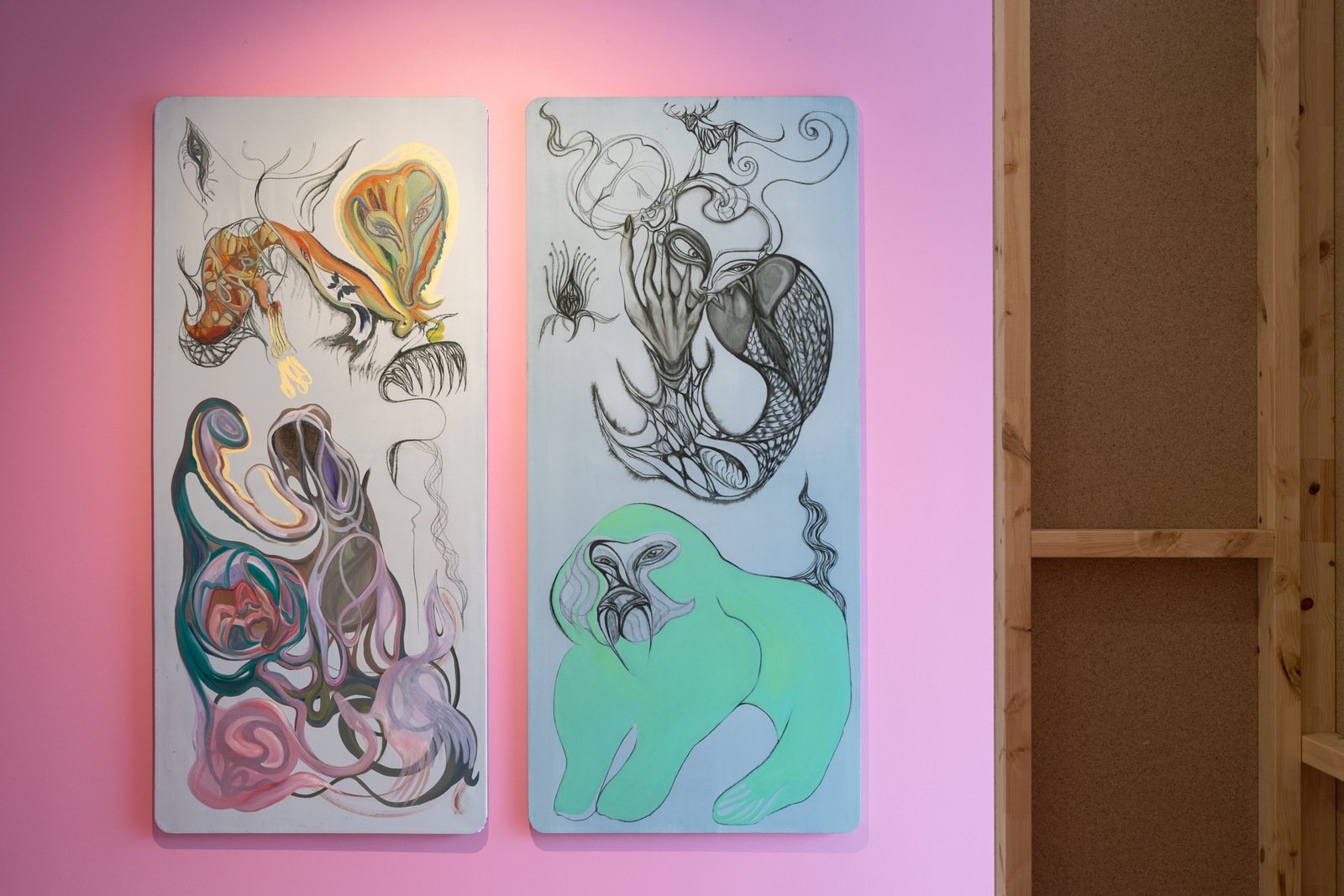Sophie Durand
Today as I dive into the Baltic Sea, I am joined in my swim towards the horizon by dandelions, seeds of new possibilities for elsewhere. How might this be a metaphor for the discussion I’d like to share about the work of Denisa Štefanigová?
What is it about the dandelions that could become an axis for dialogue?
Are they feeling like one does on a sailboat; experiencing the feeling of not being in the water and not being in the sky; feeling being caught between? There is however touch; the dandelions do not sink; they are trapped by the water tension created between their bodies and the sea. Furthermore, they do not make this journey alone, yet they are independent travellers; a group; separated but appearing to move in the same direction.
Reduced into themes three categories exist:
1. Being neither here nor there.
2. Surface tension.
3. Independent yet part of a collective.
Before going further, this reflection is prompted by the recent exhibition “To Observe the Clouds” by Denisa at Tallinn’s Tütar gallery. Located in the Noblessner harbour, this new space supports contemporary artists from the local scene. Director Mailis Timmi is dedicated to representing and showcasing younger generation artists on both domestic and international stages. “To Observe the Clouds” is the seventh exhibition and sees the shopfront gallery facing onto the pedestrian zone and away from the sea into a fuchsia labyrinth. This site-specific installation by Johannes Luik is a space in which multiple worlds presented as paintings inhabit. The exhibition’s title “To Observe the Clouds” is fitting as despite the exhibition architecture’s boldness and dominating scale; the paintings are still at the heart of this exhibition. The sky falls into the background and the viewer is left to observe the entities; the clouds within it. As such it is in the operation of these works and the aura and effect of Denisa’s paintings historically that this reflection will center.

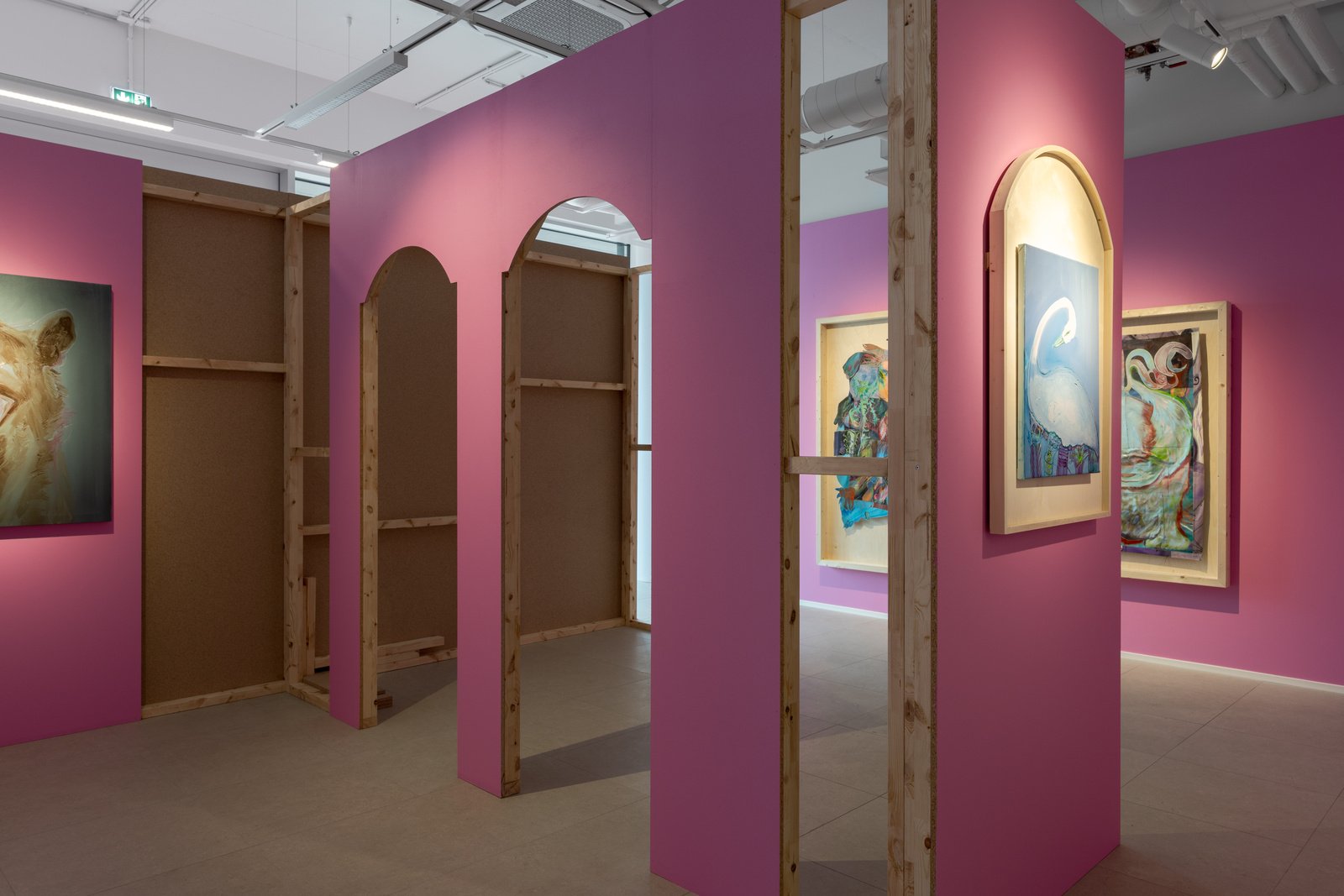
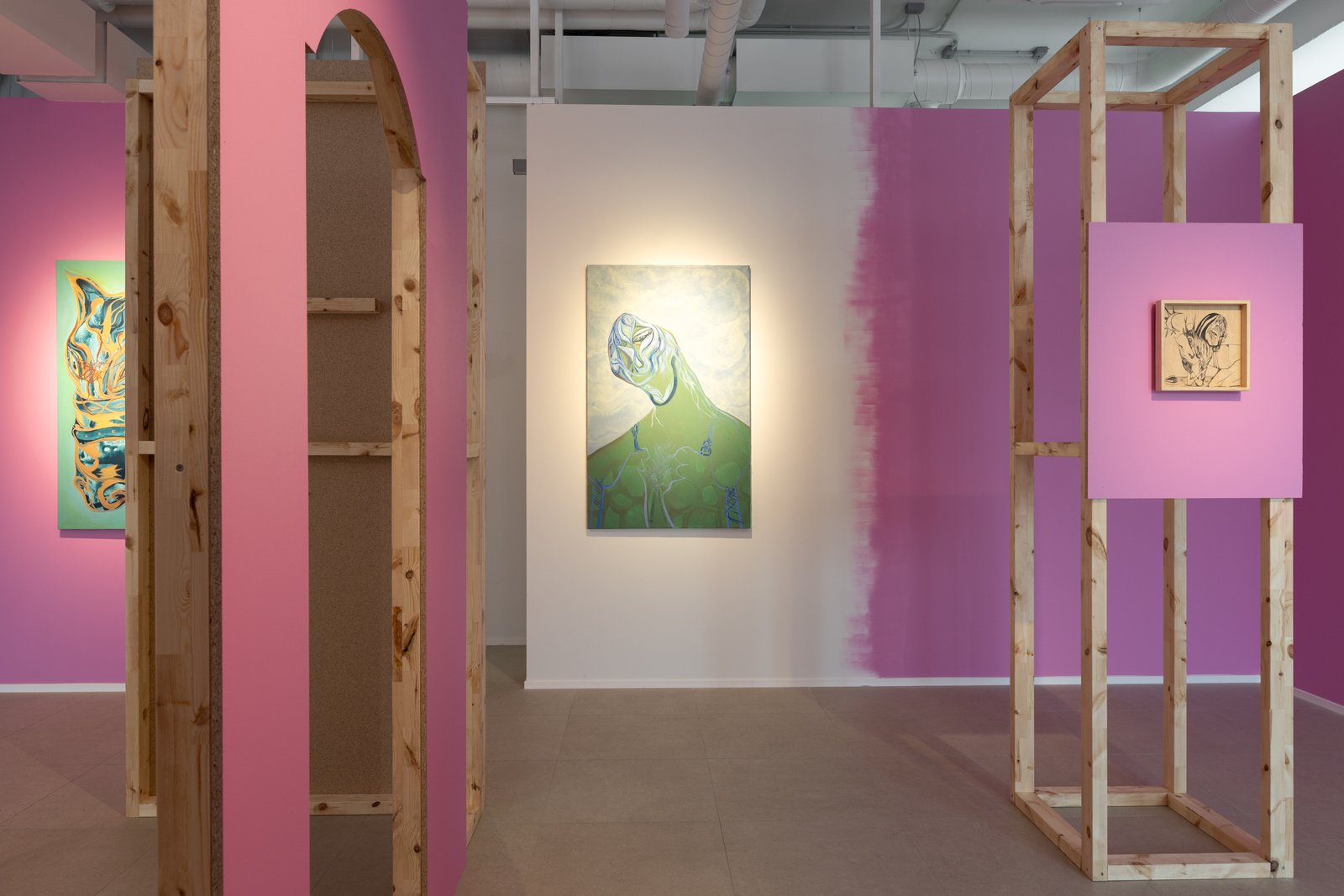
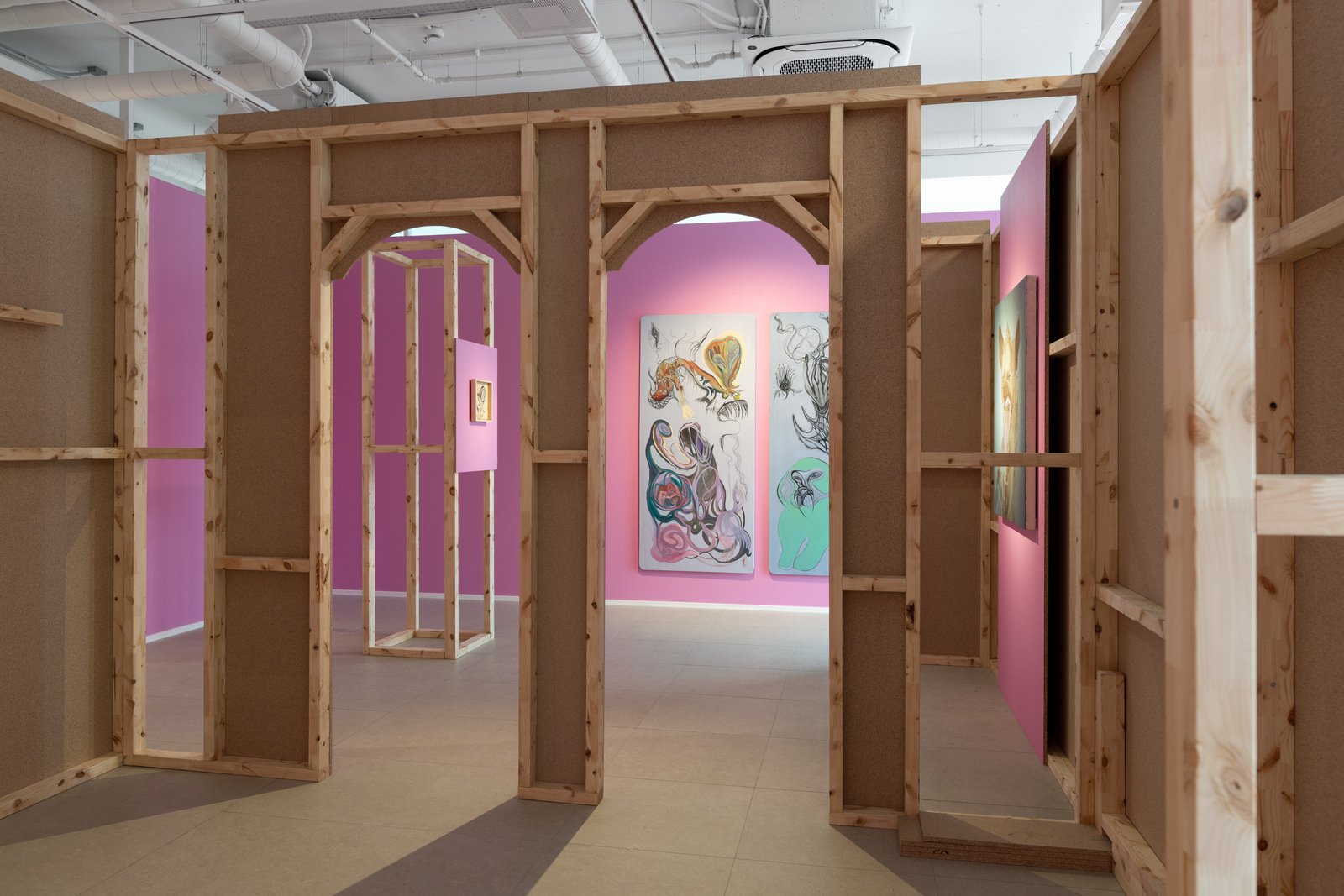
1. Being neither here nor there. Or perhaps being many things at once.
Vilnis Vējš writes: “Biruta Delle’s paintings speak to us in two languages – that of the subject matter and that of painting. The first of these we can retell at least in part, since many images must first be recognized, interpreted. The second, to whose study and perfections the artist has dedicated many years, we can explain only through metaphors. Painting is often translated” through music. Having watched three documentaries about Biruta Delle, I mentioned in conversation that I “hear” her paintings completely differently: as grains of sand that have accidentally ended up among teeth. Is it even a sound – only in my head, since no one else in fact hears it? “With such anxiety I have spent my entire life”, she said.”
Reading this statement in the current exhibition of Delle’s work in the Latvian National Museum of Art struck me; it’s an admission of the idea that painting can speak in two languages. The language of images and the language of materiality. This statement also suggests that there might be a distinction between both aspects in an artwork and that they can be either codependent or in this case independent. Operating on multiple registers. This is something that can be said of many different forms of work, yet since the relational turn there seems to be a privilege towards pursuing and discussing interconnectedness of form, content and medium. Breaking down different registers of operation can open new discourse surrounding works; works such as the paintings of Denisa.
Denisa is an infectious personality; generous in conversation and thus inviting generosity in others. Previously bodies of work involving more erotic imagery as well as the fantasy hybrid feel like collages of stories, possibilities and dreams all merged in a complex and intimate process of image generation. Denisa’s mark making is both lucid and fluid, colours mix and sit side by side; it is evident that there is dedication towards liquid paint and colour as material content. Suggestions in past experiments gesture towards possibilities of relational performative painting yet the perseverance and commitment to output of paintings (as well as textile works) that include graphic and image-based content call for multiple registers of analysis to open both the practice for the viewer and Denisa the creator. There is so much going on. So much yet to emerge, thus it is difficult to form a critique rather it is more important to form a framework to understand what we meet when encountering one of Denisa’s paintings.
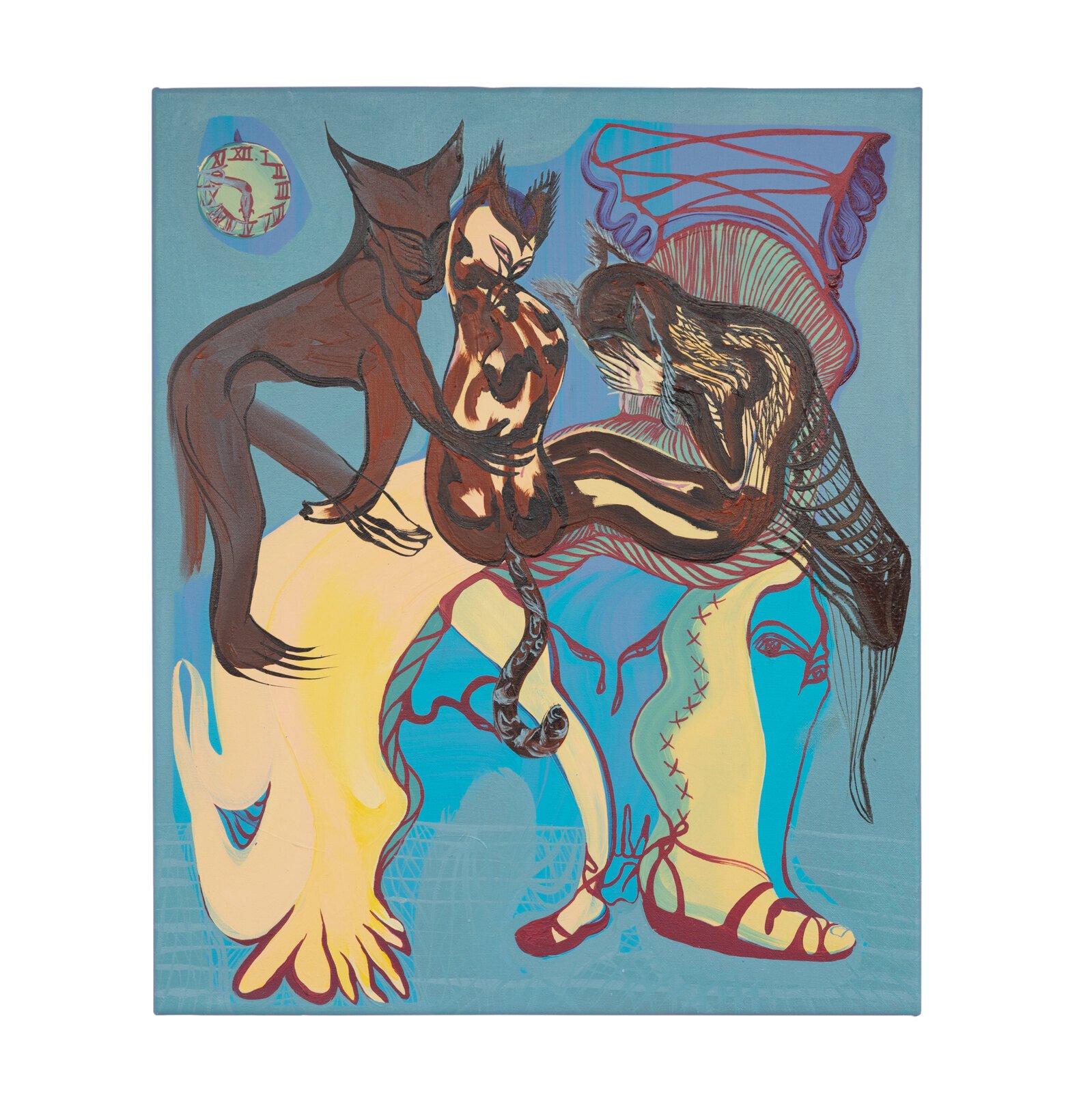

2. Surface tension. Or rather what supports another? When a surface is inhabited, observed or created.
Recycling exists in multiple ways; the transformation of something into something else and the re-presentation of the same entity multiple times; myth making and proliferating. We see both forms of recycling in Denisa’s paintings; at what point will a critical mass of paintings exist in which the true extent of the infrastructure from which Denisa’s paintings emerge may be seen? There is a process of world building at work. Furthermore, in this exhibition acknowledgement of the entire being of the paintings is also made through the rounded corners on canvases and the inclusion of charcoal drawings on naked plywood in the exhibition.
In an interview for the Louisiana Channel the artist Jongsuk Yoon says ‘in European painting the painter is outside of the canvas they express but very realistically in Asia they [the painters] are inside the canvas, they are moving inside the canvas, and they are part of their picture or image, and I think that’s why there’s no perspective. Sometimes it’s a bit philosophical but they wanted to say that their existence is just a small thought compared to the universe. I think I’m in the middle ….”
The dual possibility of a painter being outside the canvas; by this I’m unsure if that refers to making images or a broader establishment of a picture plane (whatever that means) or moving inside the canvas being themselves part of the picture. Without getting into broader generalizations about geolocated culture; I propose a third possibility of the relationship to canvas might exist: Painter creating canvas. In typing this I realize that there’s the fourth and fifth option of a hybrid of two or all three. The sewn canvases that form both support for image and object being for the works “My First Real Loneliness” (2024) and “Utopian Landscape no.1” (2024) evidence this new category.
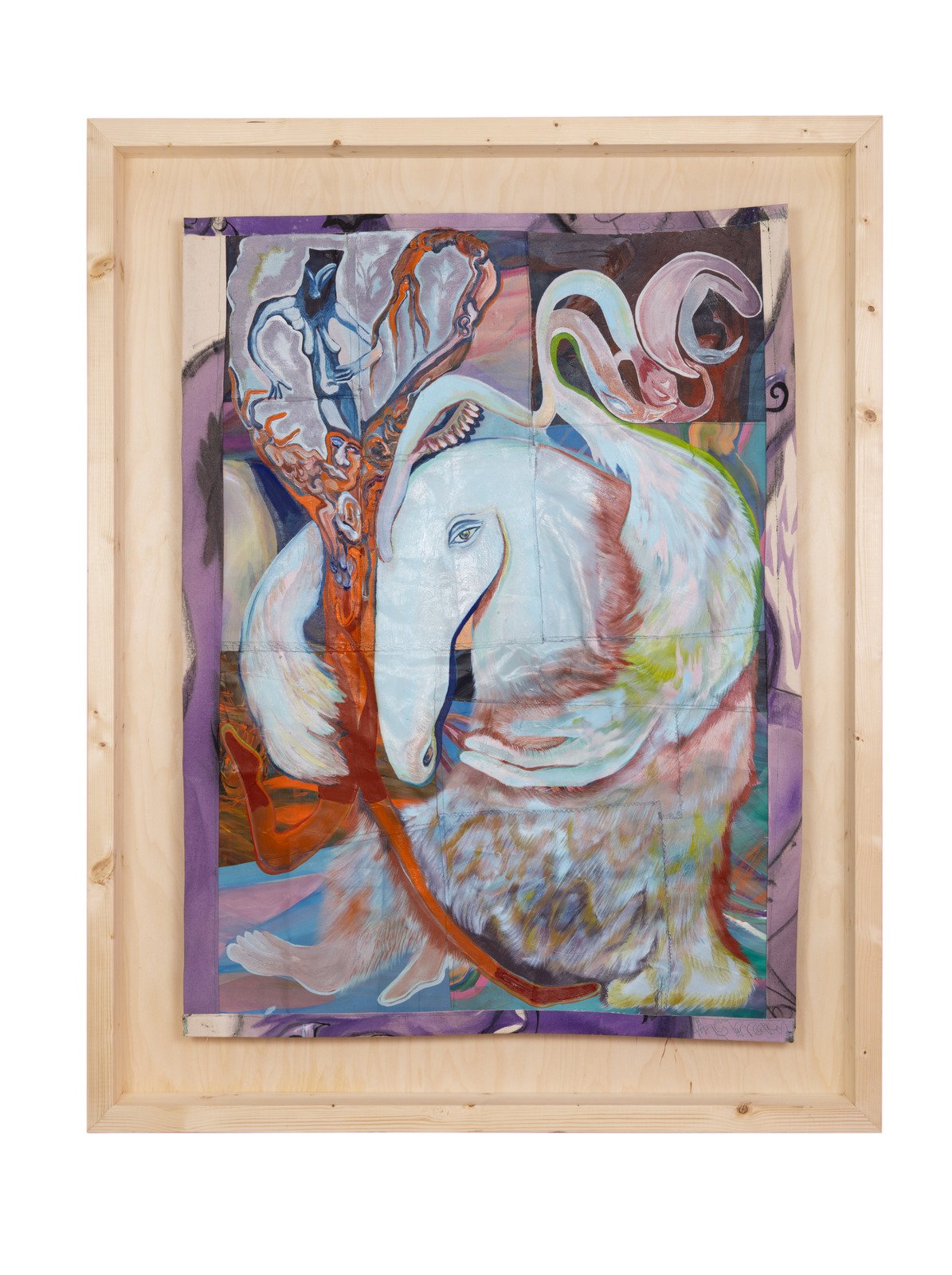
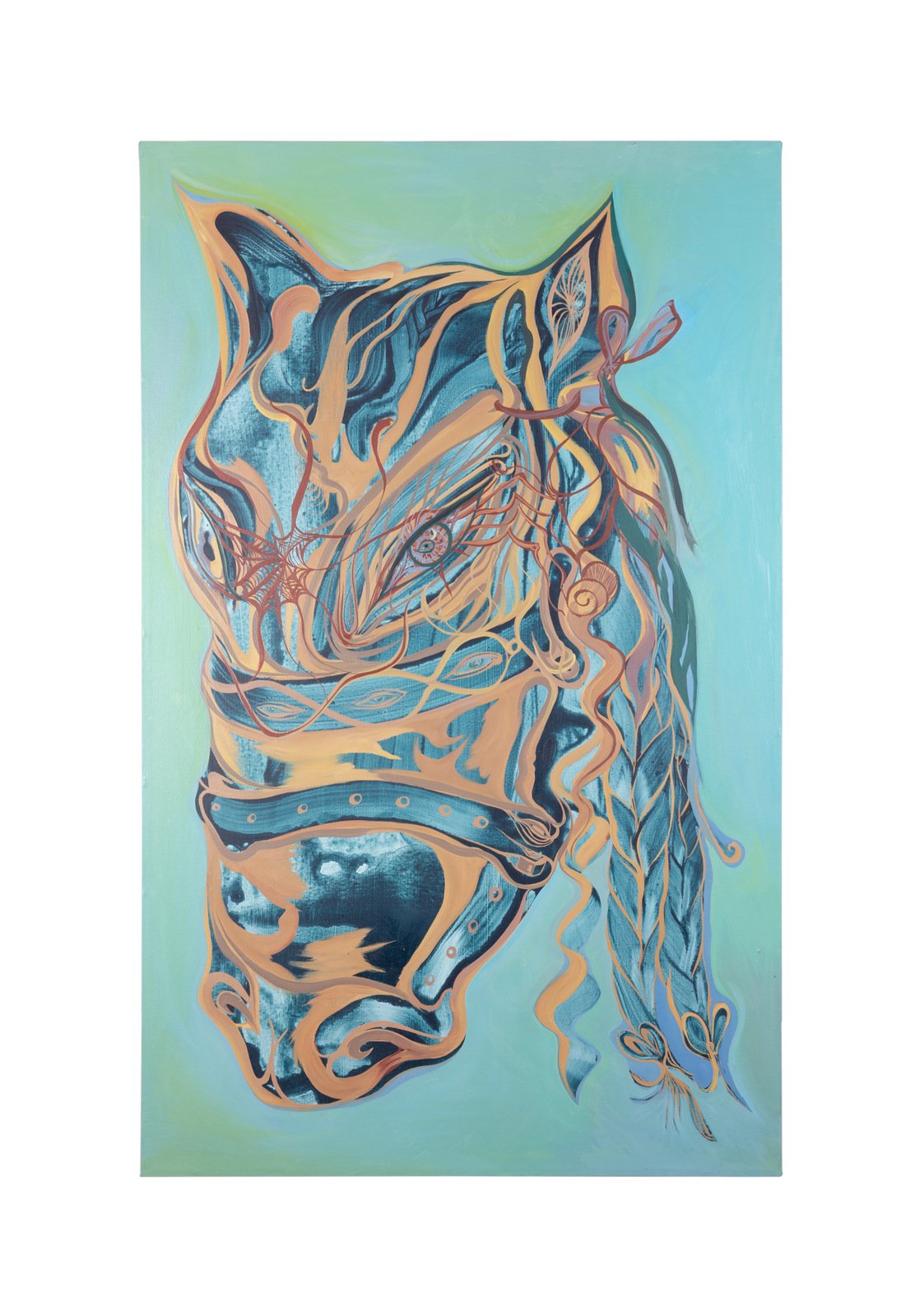

3. Independent yet part of a collective. Or rather iterative works vs. individual statements in series. The single creator as and with audience.
Denisa Štefanigová “The First Painting for Myself” 2023. This title, this painting of a laughing hyena, sparks the implication that all Denisa’s other works are for others and the questions of who these others might be? My feeling is that the answer is not so simple. Others, other humans, other others, other non-humans and other: metaphysical entities: such as possibility, expectation and preconception.
To close perhaps it is rather: less like clouds and more light dandelion seeds floating on the Baltic Sea; the paintings of Denisa Štefanigová do not float at a distance as clouds do; present immediate and tangible yet at the same time they escape containment and go beyond what words can begin to reckon with.
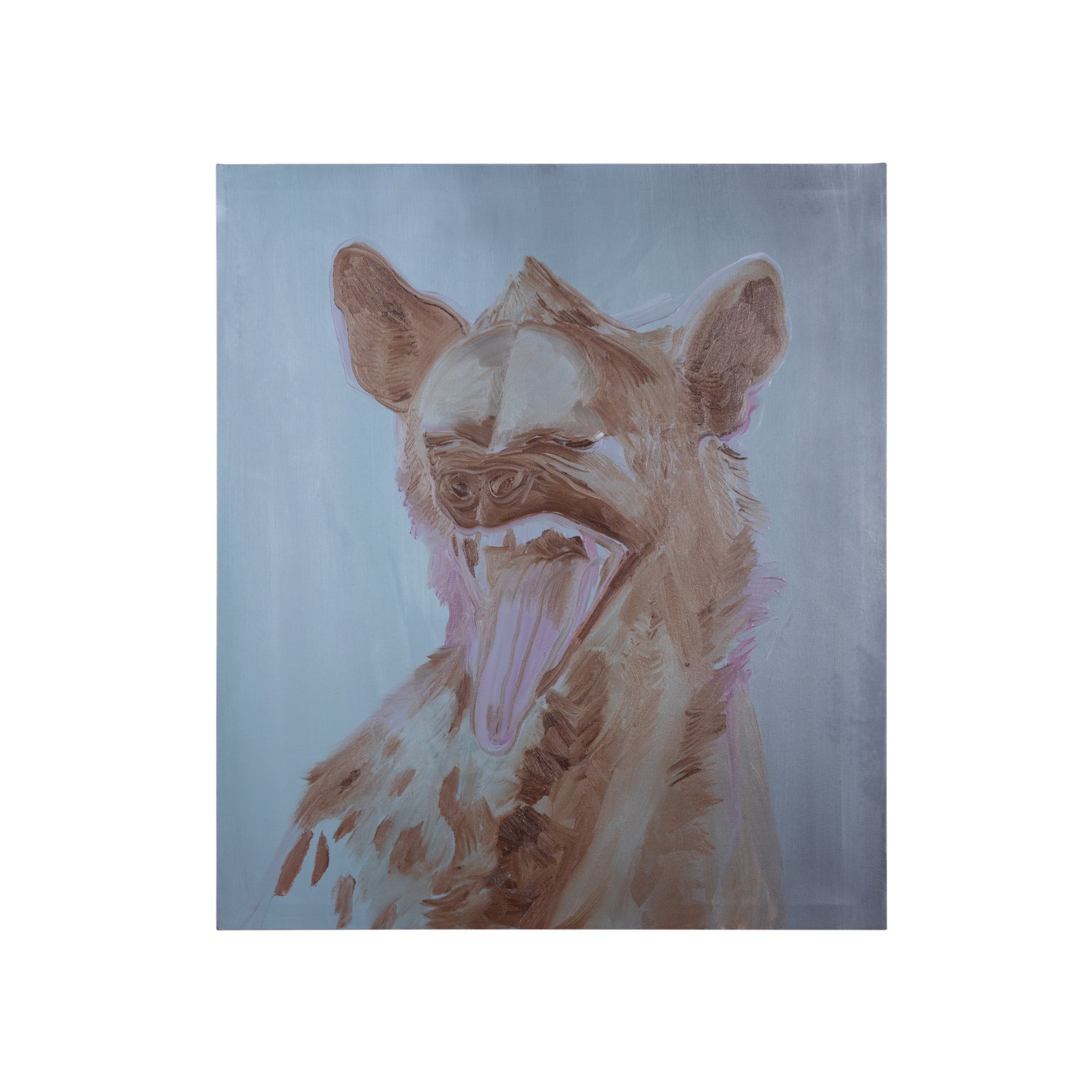
Artist(s): Denisa Štefanigová
Exhibition Title: To Observe the Clouds
Link: https://www.tutar.ee/
Venue: Tütar Gallery
Place (Country/Location): Tallinn, Estonia
Dates: 18.04.2024–02.06.2024
Photos by: Joosep Kivimäe; all images courtesy of Tütar Gallery.
